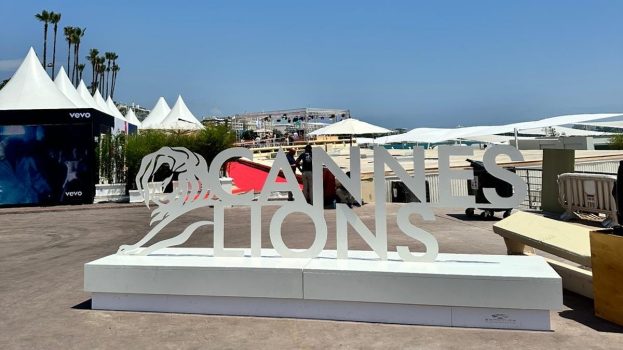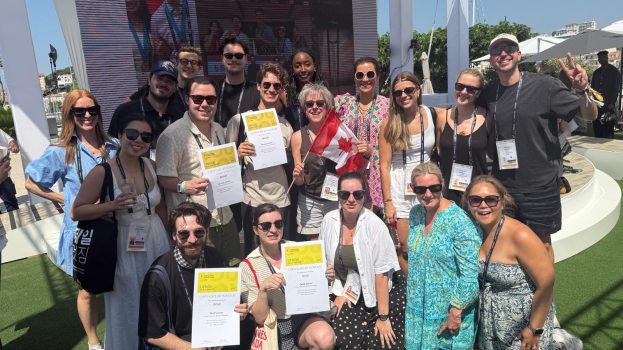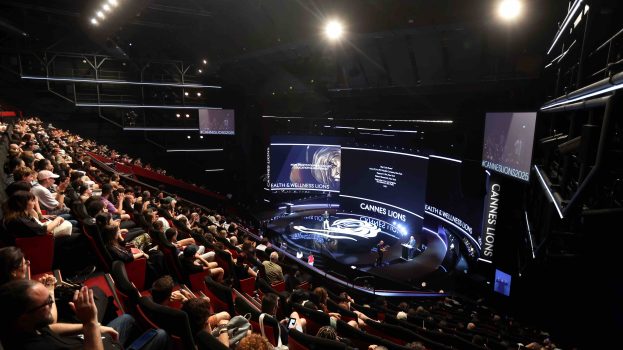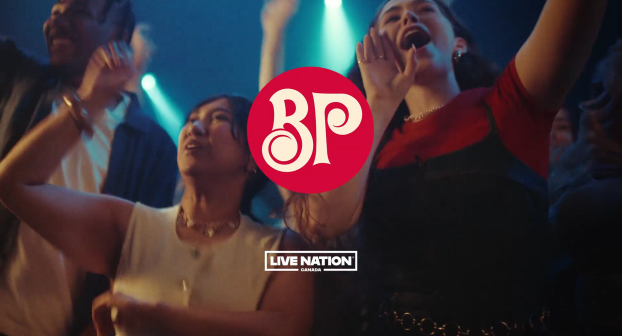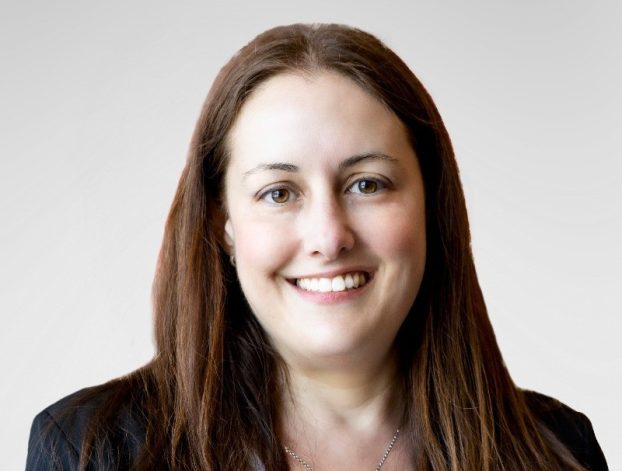
To visualize the extent of teen cosmetic injectables use, Dove created an installation with tens of thousands of medical-grade syringes.
This story was originally published in the 2023 fall issue of strategy magazine. Check back here as we roll out the Brands of the Year each day this week, including Pizza Pizza, Molson and Goodee.
Dove Canada has been promoting the idea that natural beauty is real beauty for two decades – long before Drew Barrymore, Lady Gaga and Pamela Anderson began posting viral selfies with no makeup.
It was back in 2004 when the brand conducted strategic research about beauty, says Laura Douglas, Dove brand lead and growth manager at Unilever Canada. This temperature check, however, yielded concerning findings. Only 2% of women considered themselves beautiful, and 50% felt that beauty was way too narrowly defined. In response, Dove, in collaboration with Ogilvy and Mather, released its most iconic and globally recognizable campaign: the “Dove Campaign for Real Beauty.”
This is the advertising that most people picture when they think of Dove. The brand used real women (not professional models) of different sizes and ethnicities, disrupting our notion of traditional beauty. The advertising assets featured these women across billboards and in magazines wearing simple white undergarments and confidently posing. “Real women. Real beauty,” the successful ads read.
Shortly after, Dove Canada began the Dove Self-Esteem Project. “After consulting with academic advisors, we were told that if we really wanted to change the way that women feel about themselves,” Douglas says, “we had to start this intervention with girls.” The mission, which tied in with Dove’s strategic plans, was to reach young people by providing confidence-building tools, workshops and educational activities that could be used in classrooms and by parents at home to encourage self-esteem and confidence.

Dove released “Cost of Beauty” in 2023 to show how body dysmorphia and appearance-based discrimination costs young people their self-esteem and health.
The program has been running for the last 19 years. “We are now officially the world’s largest provider of self-esteem education certified by the United Nations. It’s amazing,” says Douglas, who is obviously still excited about what this all means, and with reason. Out of the Unilever headquarters in the U.K., Dove worked with a team of leading academic body image experts to create those evidence-based resources. “We work with a lot of partners around the world to disseminate those tools and, so far, we’ve reached 94 million young people across 150 countries with a goal to reach a quarter billion by 2030.” And the brand, Douglas confirms, is on track to meet that self-assigned target.
But, of course, none of this comes without challenges.
“Upholding ourselves to the necessary academic integrity takes a significant amount of time. Validating the resources, through third-party randomized control trials to ensure that they’re having an impact on those who use them, takes about a year or two, for example,” she explains. There’s also an important financial cost from an investment standpoint. And so sticking with the vision year-over-year is not easy, but necessary. “I believe that we have a fiduciary responsibility to stay on top of the trends and what’s impacting youth’s self-esteem and body confidence,” says Douglas.
The brand is able to react quickly by staying on top of cultural events, such as when media reports tied Canadian TV personality Lisa LaFlamme’s dismissal from Bell Media to her decision to stop dyeing her hair. Shortly after the news of the star’s ousting, Dove and Ogilvy created the “#KeepTheGrey” campaign, stating that women should not be aged out of their careers by changing its gold logo to grey. Dove’s swift support of LaFlamme was possible due to the authentic leadership and trust that it had established for itself over the years, with the execution appearing seamless. “It all happened within 48 hours. We came together on a Friday night and launched on that Sunday evening and went live on social media.”
“[Dove is] committed to widening the stereotypical view of beauty and making sure that we take concrete actions so that women aren’t held back in any form, and especially when it comes to appearance-based discrimination,” says Douglas. “It was important for Dove to respond because we could authentically stand up for the fact that women should be allowed to age on their own terms without any consequences.”

Dove’s “#KeepTheGrey” campaign seamlessly jumped on a cultural moment, building upon two decades worth of work in promoting positive self-esteem.
“We wanted to celebrate women for choosing to wear their hair grey while also raising awareness that discrimination exists in the workplace. But truthfully, I don’t think we expected it to take off as well as it did,” she says. And did it ever take off. Dove quickly noticed that women all over the internet began changing their profile pictures to showcase their grey hair (whether real or made using a filter) out of support. The brand tracked at least 15,000 pieces of user-generated content and the campaign trended on X (formerly Twitter), reaching roughly 15% of the Canadian population on the platform organically.
“You could tell that it really drove and drummed up this conversation. But what we’re really proud of is that we were actually able to shift consumer behaviour and attitudes. Our intuition was right,” Douglas shares. According to Dove’s post-campaign research, 90% of Canadians said they felt that #KeepTheGrey brought attention to an important topic, and 80% of consumers said the campaign made them want to speak up if they were to ever witness ageism in the workplace.
Dove didn’t stop at helping to galvanize important change via the campaign, it also supported other organizations through donations. Within the flurry of that weekend, the brand donated $100,000 to Catalyst Canada – a nonprofit that supports building workplaces for women through thought leadership and actionable solutions.
Producing an impactful campaign and donating money to a likeminded organization still didn’t seem like enough. The brand also reached out to the Ontario Human Rights Commission to see what else it could do for women so that they don’t face the same kind of discrimination LaFlamme was subjected to. This led to the brand being offered a seat on the advisory board so that it could continue fighting for women’s rights and representation in Canada.
“This is something that I’ve also been trying to lead while I’ve had reins of the brand in Canada for the past three years. Leaning into what we’re calling ourselves an ‘actions brand’ and continuing to take actions to the next level,” Douglas explains.

Since it began its work 20 years ago, Dove has provided educational assets to 94 million young people across 150 countries – with a goal to reach a quarter billion by 2030.
Another example of the brand taking action to spur change can be seen in “The Cost of Beauty,” a campaign that pointed to alarming data showing how social media is directly fueling a mental health crisis (see p.78-79 for more). Dove partnered with Canadian organizations to directly address the issue, providing support for the Centre for Addiction and Mental Health (CAMH) and its Youth Wellness Hubs Ontario (YWHO) network by developing virtual programming to drive early intervention and more inclusive access to care for youth struggling with mental health issues.
While ROI is certainly a consideration for the work Dove does, Douglas highlights that a lot of what pushes her and her team is the duty they have towards consumers. “There [is a lot of investment] to make sure that we continue doing what’s right for Canadian women and girls. And Unilever truly believes that brands with purpose, the ones that have these types of social missions are the ones that are leading our business.”

